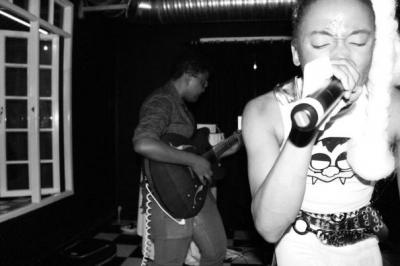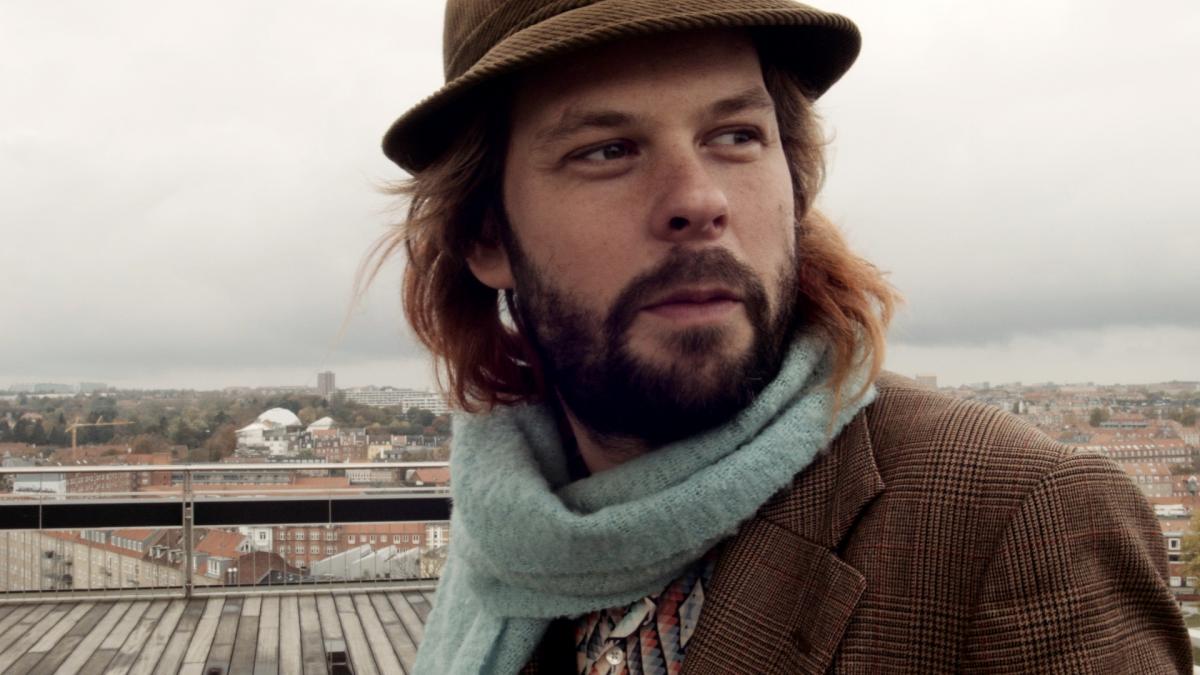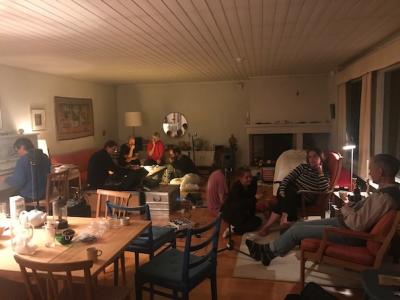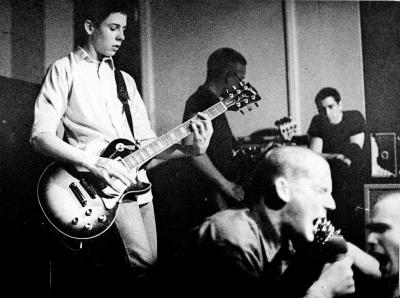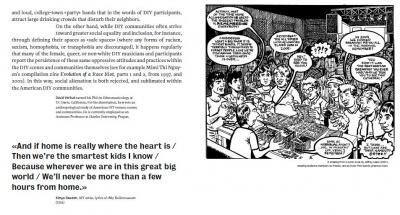Various American music scenes are not identified in terms of genres but more in terms of space. The example of DIY touring in the US delineates this. From the Norient book Seismographic Sound (see and order here).
Punk, metal, indie rock, folk, and experimental music are all music cultures that today coexist, overlap, and share spaces within a larger context of American DIY scenes. Various American music scenes are subsequently not identified in terms of music genres but more so in terms of space (shared DIY venues and scenes), and their overlapping but rarely unified pragmatic and political DIY approach. In this way, American DIY participants joined hands and used DIY tactics to overcome the problem of the lack of public space in the neoliberal era, and to achieve freedom from restrictions imposed within institutional and commercial frameworks.
Through the DIY approach, participants also reject the loneliness of social alienation existing within a larger American society, and in contrast strive to create intimate DIY communities that value personal contact and face-to-face interaction. In this article, I demonstrate how DIY participants achieve this aim through a DIY practice of playing shows and touring that generates community on three socio-spatial levels: on the micro-social level, as «music groups» (often associated with specific houses and venues), on the local level, through «shows», and on the translocal, through touring. In this regard, I point out the importance of place, either in the form of particular venues (houses, DIY spaces), and localities (scenes), or as translocal spaces (DIY networks), and mediated, or virtual spaces (Internet). This focus on place enables us not only to understand how music communities are assembled on different spatial levels, or to observe the social and musical diversity of DIY scenes, but also, as I emphasize below, to examine the desired and established modes of social relations within and between them. Finally, in the conclusion of this article, I highlight also some of the complexities and contradictions related to the issues of alienation and community within American DIY scenes.
A Translocal Community
Instrumental in the formation of larger DIY communities are micro-social musical units, or «bands». These social groups are constituted and maintained not only through band rehearsals and playing shows, but also through the touring experience. For band members, often joined by friends, hanging out together for twenty-four hours per day while on tour is a communal experience that, as Jeffrey from 3 Moons claims, creates a «group mind». Long hours of waiting and driving together, the confessional conversations, fun group activities, and at the same time, all the hardships of touring, in the words of Ian MacKaye from Minor Threat and Fugazi, «unite» the band. On another level, touring bands bring together the community of local participants through playing local shows on their tours. Moreover, as non-local participants, touring musicians generate a translocal community through their interaction with various local communities around the country. This translocal DIY community is created through the reciprocal relation of playing and booking each other’s shows. To be able to tour, touring bands use favors of local DIY participants, who organize shows for them in their houses, or elsewhere, while the local DIY participants, when they go on their own tours, later seek out the return of the same favor.
The type of translocal community generated through DIY touring is a network of participants that are not seen as «fans», as in most non-DIY music scenes, but more as «friends». As Danielle from the Portland band Taxpayers noted to me, the whole translocal DIY network is based on the «network of favors,» and added that «friendships are born out of that» (see comic book excerpt below).
DIY participants, while on their translocal travels through the US, constantly meet and cross paths with one another, and transform their initial business-like relationships into translocal friendships, or as Heather Blotto noted in her zine Straight Trippin’: A D.I.Y. Guide to Going on Tour:
«What started out as a passion and a common interest, then morphed into a weird quasi-businesslike relationship (booking), becomes a friendship based on passion and common interest. Amazing. This is why the huge, informal-but-totally-functional network of kids all over the place doing D.I.Y. shows and going on tour is actually a revolutionary underground movement and not just a bunch of people trying to promote their individual agendas. Soon you may notice that all of your new friends all over the country already know each other. Welcome!»
This community of «friends» is not as much an «imagined» community, based on mediated relationships, but a face-to-face, participant-to-participant, and place-to-place community, based on direct and physical ties. On the other hand, mediated, non-face-to-face communication through the Internet carries its own significance for American DIY scenes, since it does not alienate the DIY participants, but on the contrary, enables them to communicate translocally, especially in terms of booking and advertising shows. This is also evidenced by the extent of DIY house and warehouse shows, and touring bands, in the US that started to grow during the beginning of the Internet era, in the 1990s, and peaked in the 2000s.
Community of Intimacy and Alienation
Within this social and spatial arrangement, place (as a venue) is treated as an «item» in a translocal reciprocal exchange of shows or booking «favors» on a tour. Therefore, it carries a great material importance. Furthermore, the place determines the quality of relations established between the touring band and the locals. As DIY participants acknowledge, playing in small and non-commercial «intimate» places, hanging out with locals and sleeping in their houses instead of in motels not only reduces traveling costs but also generates more close and personal relationships, and establishes for them the feeling of «home» wherever they go (see, for example, the lyrics of Kimya Dawson’s song «My Rollercoaster»).
Through this rejection of the dominant capitalist world, DIY communities seek not only alternative spaces, but also alternative ways of social interactions that emphasize friendship and community. However, these communities also often replicate social patterns of repression and exclusion that exist in the dominant society. For instance, although mostly publicly advertised, DIY shows often happen in small and private places (houses), or remote or gritty industrial areas (warehouses), which prevent larger audiences from attending them. In addition, DIY programming is often unwelcoming to «major label bands» (at the Gilman 924 club in Berkeley, California), or to «cock rock», and loud, college-town «party» bands that in the words of DIY participants, attract large drinking crowds that disturb their neighbors.
On the other hand, while DIY communities often strive toward greater social equality and inclusion, for instance, through defining their spaces as «safe spaces» (where any forms of racism, sexism, homophobia, or transphobia are discouraged), it happens regularly that many of the female, queer, or non-white DIY musicians and participants report the persistence of these same oppressive attitudes and practices within the DIY scenes and communities themselves (see for example Mimi Thi Nguyen’s compilation zine Evolution of a Race Riot, parts 1 and 2, from 1997, and 2002). In this way, social alienation is both rejected, and sublimated within the American DIY communities.
